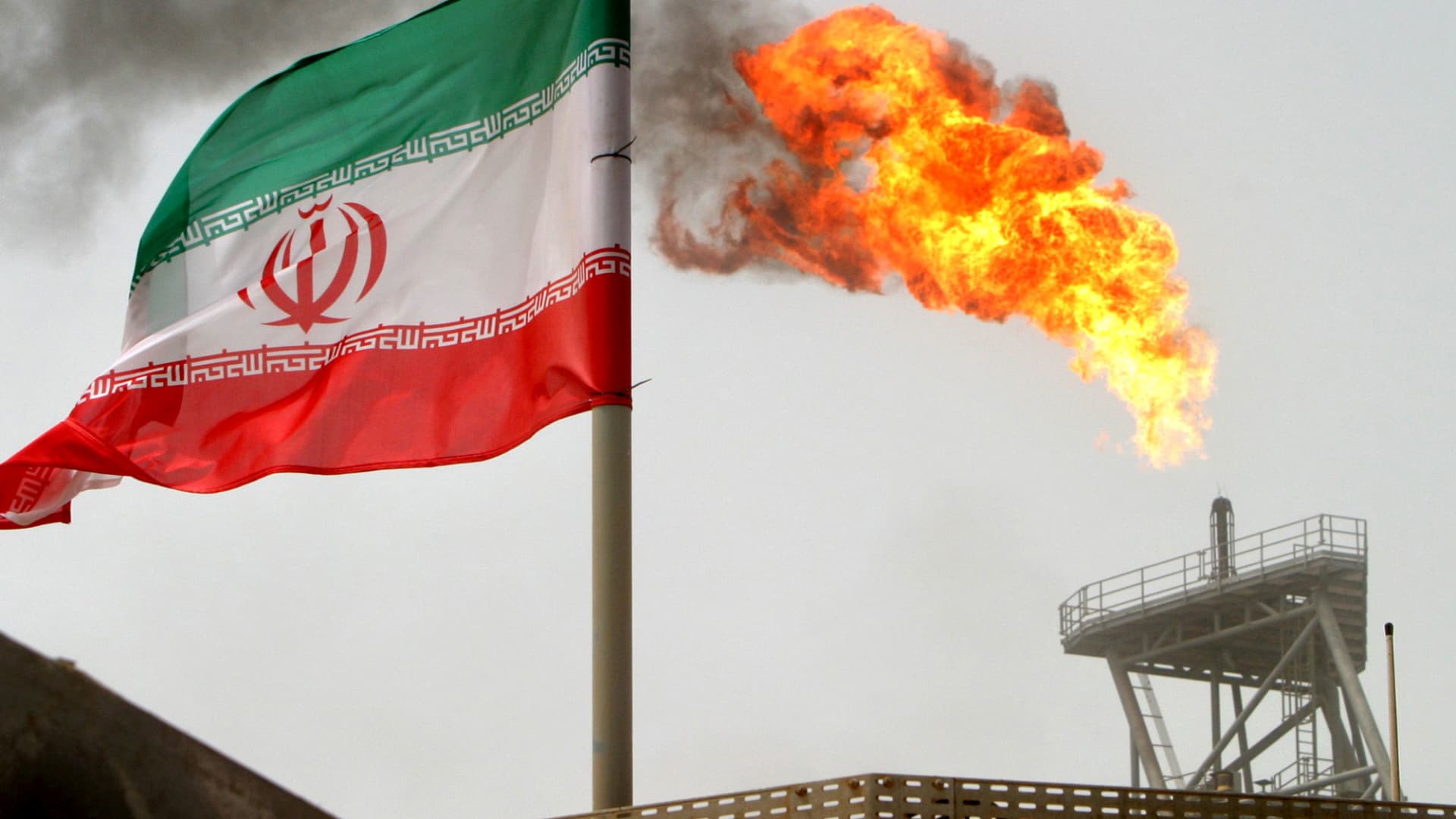
The return of the Iran nuclear deal could be imminent — and with it, the return of a lot of oil to international crude markets.
Before the U.S. resumed sanctions on Iran after former President Donald Trump left the deal in 2018, Iran was the third-largest producer in OPEC after Saudi Arabia and Iraq. In 2017, it was the fourth-largest oil producer in the world, after the U.S., Saudi Arabia and Russia.
"OPEC could easily produce 30.5 million bpd (barrels per day) if Iran comes back and those barrels are not accommodated," Tamas Varga, analyst at PVM Oil Associates in London, told CNBC on Tuesday. "Under this scenario my model shows Brent dipping to $65" per barrel in the second half of 2023, Varga said.
That's a massive drop from the current price of Brent crude, which was trading at just over $101 a barrel on Tuesday morning in New York.
Last week, Saudi Arabia's energy minister, Prince Abdulaziz bin Salman, warned that OPEC could be forced to cut oil production. The minister's reasoning was that physical and paper markets are "disconnected" with the latter suffering from "very thin liquidity, extreme volatility," he said in an interview with Bloomberg last week.
But Iran's potential reemergence on the market is also likely to be a concern, analysts say.
"OPEC+ might be preparing for the eventual return of Iran," Varga wrote in a report Tuesday. "Should the nuclear deal be revived, 1-2 million barrels per day of extra oil could hit the market in a comparatively short period of time."
And veteran OPEC analyst Helima Croft, head of global commodity strategy at RBC Capital Markets, told the Financial Times last week that "earlier this year I think it's fair to say Saudi Arabia and other regional actors were reasonably confident the Iran deal wasn't going to happen in the near future … Now that the negotiations have been revived I think they will be focused on both the oil market and the wider security implications of this deal potentially getting over the finish line."
But will a deal happen?
Iranian negotiators in mid-August expressed optimism about the prospects for an agreement, with one advisor saying "we're closer than we've been before" to securing a deal and that the "remaining issues are not very difficult to resolve."
But so far, it seems there are a few remaining sticking points that are proving fairly difficult to resolve. The main issue of contention between the Iranian and Western camps is an ongoing investigation by the International Atomic Energy Agency — the U.N.'s nuclear watchdog — into unexplained traces of uranium found at Iranian facilities in the early 2000s. Tehran wants the investigation closed before they'll accept any deal; the IAEA and U.S. and European governments are so far refusing.
The nuclear deal, formally called the Joint Comprehensive Plan of Action and penned under the Obama administration along with France, the U.K., Germany, Russia, and China, lifted economic sanctions on Iran in exchange for limits on its nuclear program.
Since the U.S. withdrawal in mid-2018 however, sanctions have crushed Iran's economy of 84 million people and Tehran has progressively ramped up its nuclear activity in breach of the deal, enriching uranium to the highest levels it has ever enriched and prompting the head of the IAEA to warn that "only countries making bombs" are exhibiting this level of activity.
That means the stakes are high, and particularly for the Biden administration, which listed the revival of the deal as a key foreign policy goal. It's also become more urgent as sanctions on Russia due to its invasion of Ukraine slash Europe's oil and gas supply and send prices soaring. While Iranian oil wouldn't fully offset the loss of Russian barrels, it would still help ease supply pressures, analysts say.
"An Iran deal would represent an additional 1.1, 1.2 million barrels per day in crude exports, production and exports. That would happen over the next eight months. So we'd have a material difference on balances globally," said Reid l'Anson, senior commodity analyst at commodities data firm Kpler.
But l'Anson doubts the likelihood of a deal being achieved, and he isn't alone.
"The question moving forward is are we actually going to see a deal," he said. "I still think we probably will not just given the fact that it's politically unpopular in America and also even in Iran."
Bob McNally, president at Rapidan Energy Group, was more optimistic.
"We think a deal is likely; we think it's always been quite close and it's getting much closer," he said.
"Iran has about 150 to 200 million barrels of crude and condensate floating on the water. As soon as the deal is done … you'll get a rush of that sale of stored oil," he said, estimating that Iran would increase its production by about 900,000 barrels a day.
That means a significant boost from the current output level of roughly 30 million barrels per day, unless OPEC members substantially lower their oil output. "That is something that OPEC and OPEC plus has to factor and think about as they think about oil supply policy," McNally said.
Given the Saudi energy minister's recent comments, it seems the group is certainly thinking about it. But the longer Iran deal negotiations remain stuck over points of contention, the longer OPEC has to prepare — assuming a deal is reached at all.
"oil" - Google News
August 31, 2022 at 12:43PM
https://ift.tt/CrFnTKv
An Iran nuclear deal revival could dramatically alter oil prices — if it happens - CNBC
"oil" - Google News
https://ift.tt/Dot1kn9
Shoes Man Tutorial
Pos News Update
Meme Update
Korean Entertainment News
Japan News Update
Bagikan Berita Ini















0 Response to "An Iran nuclear deal revival could dramatically alter oil prices — if it happens - CNBC"
Post a Comment